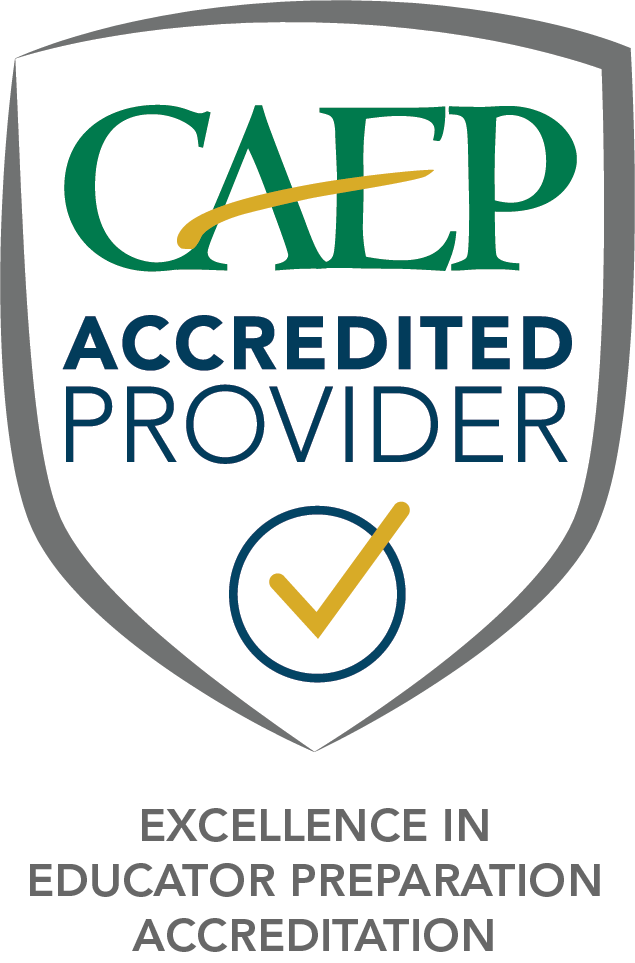CAEP Accountability Measures
GBSC’s education programs meet rigorous national standards for educator preparation set by the Council for the Accreditation of Educator Preparation.
CAEP’s accountability measures are intended to provide information to the public about program outcomes and program impact.
CAEP’s accountability measures focus on the following.
- Measure 1: Effectiveness of completers
- Measure 2: Satisfaction of employers
- Measure 3: Candidate competency at completion
- Measure 4: Completers’ ability to be hired
As defined by our accreditors, completers refers to
a candidate who successfully satisfied all program requirements of a preparation program at least six months previously and who is employed in a position for which they were prepared for state licensure.
Thus, the measures provided below focus on graduates from licensure-eligible programs from 2020-2022.
Measure 1: Effectiveness of Completers
The Employer Survey, administered to supervisors of licensure-eligible completers, showed high levels of satisfaction with completers’ knowledge, skill, and dispositions within the classroom (3.35/4, n=5).
Because of the small sample size of the Employer Survey, follow-up interviews were conducted to provide qualitative data on completer effectiveness.
As noted in the interview report below, completer supervisors find the EPP’s graduates mostly effective in the classroom.
Measure 2: Satisfaction of Employers & Stakeholder Involvement
Employer Satisfaction
The Employer Survey, administered to supervisors of licensure-eligible completers, also showed high levels of satisfaction with the EPP’s preparation of completers (3.37/4, n=5).
Because of the small sample size of the Employer Survey, follow-up interviews were conducted to provide qualitative data on program effectiveness.
As noted in the interview report below, supervisors interviewed expressed overall satisfaction with the preparation provided by the EPP.
Stakeholder Involvement
To develop meaningful relationships with local educators and stakeholders, the EPP meets bi-annually with its Education Advisory Council.
The council is composed of individuals from the following sectors: elementary, middle, and secondary administrators; cooperating teachers; educational specialists; community representatives; and education program alumni.
The council’s goals are to:
- annually review assessment data to identify areas of strength and opportunities for improvement,
- make recommendations for assessment-based change within education programs,
- offer insights from the public and private education sectors on how our education programs may better prepare our teacher candidates to enter the profession and demonstrate effectiveness in the classroom.
Measure 3: Candidate Competency at Program Completion
GBSC’s education programs assess candidate dispositions for teaching throughout the program, including at admission, prior to student teaching, and during student teaching.
Such assessment helps ensure that students who complete our programs not only have the academic qualifications for teaching but also the dispositions that will help them be successful as student teachers.
At the end of student teaching and following graduation, students’ competency for teaching is also assessed.
As indicated in the data below, GBSC’s education program completers show increasing competency during their program and high levels of competency at and following graduation.
Ohio Assessment for Educators Test Scores also show a high level of competence from completers, as indicated in the table below.
| Test | Pass Rate | Average Scaled Score | Scaled Scores from Individual Tests (2022-2023) | |||
| 090 Foundations of Reading | 100% | 250 | 242 | 257 | 271 | 228 |
| 018 Elementary Education Subtest I | 100% | 248 | 250 | 250 | 243 | |
| 019 Elementary Education Subtest II | 100% | 231 | 224 | 220 | 248 | |
| 001 Early Childhood (PK-3) | 100% | 267 | 272 | 262 | 248 | 285 |
Measure 4: Ability of Completers to Be Hired
Because of the demand for educators and the quality of our graduates, 100% of our completers who have sought employment as teachers in the Cincinnati region following graduation have been hired (n=3).
In an employer survey administered in 2023, administrators of current completers serving as teachers responded positively to the prompt: “likelihood of hiring or recommending to hire more…education program graduates” (3.4/4, n=5).
As noted earlier, qualitative data from interviews with our graduates’ administrators or supervisors noted areas of improvement among graduates but also overall satisfaction.
Based on survey data from graduates themselves, licensure-eligible completers consider themselves as well prepared to enter the teaching profession (100%, n=2) and while only 50% (n=4) had looked for work in the teaching profession at the time of the survey, 75% (n=4) had already been offered employment relevant to teaching.
Get Started
- Call - (513) 763-6565
- Text - (513) 402-chat (2428)
Accreditation
We are accredited by both the Higher Learning Commission (HLC) and the Association of Biblical Higher Education (ABHE). See why having both matters.


